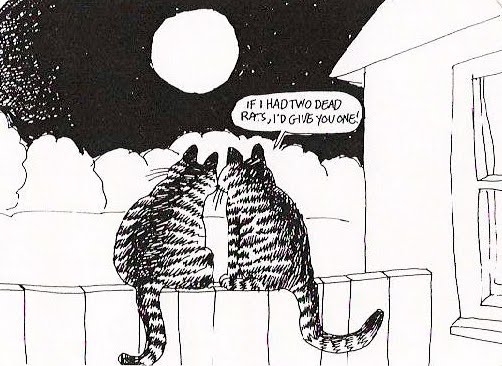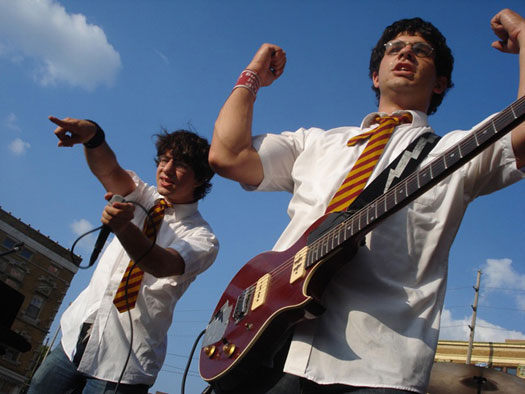Comics and Popular Science: An Interview with Clifford V. Johnson (Part Three)
/We might expect a book called The Dialogues to be fairly text-heavy and we certainly have much conversation here, but some of the more surprising moments come on pages which have little or no dialogue. What role does silence play in your exchanges?
Oh, I love silence in comics! I love the whole business of leaving the reader alone with their thoughts, just providing fragments of a narrative through images that they can embellish in their way. I really wanted this book to breathe, with lots of space for the reader to reflect, or perhaps to prepare for the next set of ideas after finishing the last. I designed every element to facilitate this. This includes pauses in the conversation. Sometimes you need to stop talking and think about the points being made, or just back off from an approach and try another. I wanted to show that aspect of a conversation, for sure. Generally, my publisher (MIT Press) was very generous in allowing me control of every aspect of the design, right down to the cover, even though they were doubtful about one choice. Once a chapter/conversation ends, there’s the notes, and then there’s a double page spread separating chapters that’s a blank page on the left, and then just a simple number (with a window to the next chapter) on the right. A number of editors questioned that blankness, and suggested either skipping it or putting a splash of colour on it. But I resisted. I wanted this as a palette cleanser. A bit of silence before diving into the next chapter. And then in some cases, even after you start the chapter there’s a lot of visuals before you get to the conversation, so you ease in gently, perhaps wondering what concept you’re going to be thinking about next. Actually, since a lot of those opening visuals involve drawing what felt like thousands of windowpanes in skyscrapers, I did find myself cursing my love of architectural detail, telling myself that people are just going to flip through those pages until they find speech bubbles anyway. I briefly considered having a narrator help move the reader through some of it, and maybe act as a connector between stories too, but I did not want to break the silence, and then the narrator risks being seen as me, and there’s the whole voice of authority coming back in. Everyone is so rushed these days but I do hope some people take the time to linger through the silences, and glance at some of the details. I actually went out there into the world and measured the heights of those parking meters! And in some cases completely (after lots of research) constructed the interiors of certain spaces so that I could use them as settings.
I was amused by your opening segment which depicts a conversation between a man and a woman both dressed as superheroes. This seems to be a wink and a nod towards the expectations many have about the kinds of content appropriate for comics. Yet you soon shift towards other comics genres and keep changing ground across the book. In what ways did you play here with audience expectations about comics as a medium?
Yes! You saw that, great! That was exactly the joke. I find myself frustrated, still, that in 2017 people are still mixing up comics with genre. So you see it all through the culture. It is something that affects this very book, since it really belongs with non-fiction science books, but I'm going to have to fight for it to be on those shelves. Instead it's just going to be lumped with comics and graphic novels. It'll be alongside (if if I'm lucky enough to get shelf space at all!) wonderful comics about history or graphic memoirs, etc., and that’s great, but those books should be in the history and memoir sections of the bookstore. But anyway, I could rant about this a lot more. In any case, I thought I would at least amuse myself (if nobody else) by having the book open with everyone in superhero costumes (since that’s what most people are expecting form a comic)… but then you look closer and see that the costumes fit badly, and it becomes clear that it's just regular people in costume at a party. And they are at a museum, and they start talking about science because of the superhero context. I started that story a long time ago in the process, before the ubiquity in people's consciousness of cosplay at conventions and so forth. If I were starting to write it now, I consider just setting it as a conversation in a line at some ComicCon, with costumed people everywhere. Or maybe I wouldn't, since I've learned from bitter experience to try to avoid crowd scenes, along with lots of skyscrapers and their endless rows of windows.
This was not your first experience working with superheroes, since you provided technical advice to Agent Carter’s producers. How did you become a technical advisor for this superhero series and what motivated you to participate in this process?
Oh, yes. I worked on Agent Carter, season two. Actually, I've worked on a lot of other superhero things you might recognise, like Agents of Shield, The upcoming Avengers movies and Thor: Ragnarok which is coming out around now. I think I started getting involved in Science advising for movies and TV well over a decade ago because I’d talk about science and film on my blog, and word got around. Also, I got a reputation as a good explainer from my work as a guest expert on various TV documentaries like PBS’s Nova, The History Channel’s The Universe and so forth. People from the industry started getting in touch. Motivation? I really think that it would be a massive mistake to not use the most powerful and pervasive storytelling tools ever invented - TV/Film - in getting people interested in, or at least familiar with, science and scientist characters. And it shouldn’t just be in documentary. Science is (or should be) part of our general culture, so you should see it everywhere. But anyway, the connection to Marvel in particular really began in earnest because a few years ago the Science and Entertainment Exchange (a nonprofit set up by the National Academy of Sciences to help connect scientists to entertainment people) started to suggest my name to some of Marvel’s producers as someone who can help with big physics stuff like space, time, energy, and so forth. Just what gets played with a lot in the Marvel Universe. The collaboration with the Agent Carter people was particularly successful because they called me in very early, before they wrote much. This is unfortunately still unusual - science advisors are wrongly mostly thought of as fact-checkers to be brought in near the end. I was able to help give them a lot of physics ideas (or fanciful ideas inspired by real physics) underpinning for a lot of the universe they were trying to create, and from that comes not just good visuals and buzzwords, but entire story ideas, character ideas, and so forth, that have the science embedded in them. It was a true collaboration that made that season really strong, in my opinion, because you might recall that her agency was the Strategic Science Initiative, so it made sense that the science needed to be up front.
Clifford V. Johnson is a professor in the Physics and Astronomy Department at the University of Southern California. Here's how he describes his research on his home page: "My research (as a member of the Theory Group) focuses on the development of theoretical tools for the description of the basic fabric of Nature. The tools and ideas often have applications in other areas of physics (and mathematics) too - unexpected connections are part of the fun of research! Ultimately I (and the international community of which I am a part) am trying to understand and describe the origin, past, present and future of the Universe. This involves trying to describe its fundamental constituents (and their interactions), as well as the Universe as a dynamical object in its own right. I mainly work on (super)string theory, gravity, gauge theory and M-theory right now, which lead me to think about things like space-time, quantum mechanics, black holes, the big bang, extra dimensions, quarks, gluons, and so forth. See the research page for more, or look on my blog under the "research" category (here). I spend a lot of time talking about science with members of the public in various venues, from public talks and appearances, various intersections with the arts and media (you might catch me on TV and web shows like The Universe, Big History, or Fail Lab), to just chatting with someone on the subway. I love helping artists, filmmakers, writers, and other shapers of our culture include science in their work in some way. Check out my blog for more about those things, and occasional upcoming events. Get in touch if you are interested in having me appear at an event, or if I can help you with the science in your artistic endeavour."

















